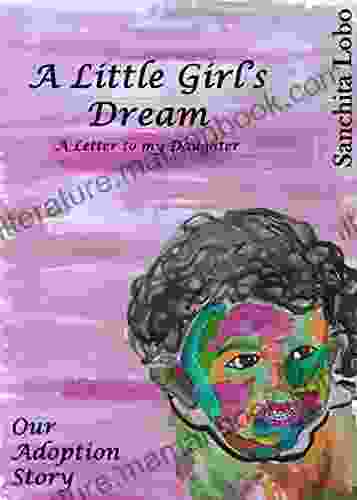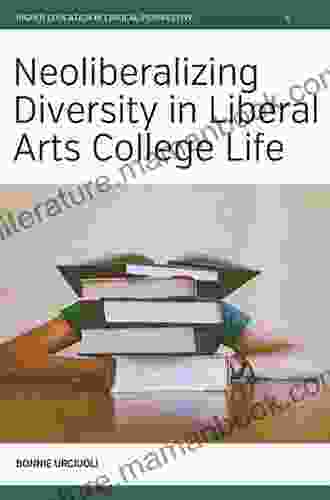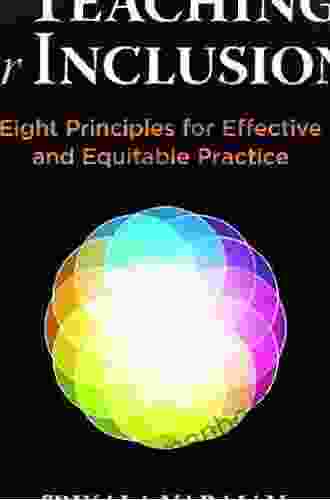Eight Principles for Effective and Equitable Practice: Disability Culture and Inclusive Education

Disability is a natural part of human diversity. It is estimated that over one billion people worldwide live with some form of disability. People with disabilities have a wide range of abilities, experiences, and perspectives. They are just as diverse as any other group of people.
Creating inclusive educational environments for students with disabilities is essential for ensuring their success. This means providing them with the supports and accommodations they need to learn and participate fully in the classroom. It also means creating a school culture that is welcoming and supportive of all students, regardless of their abilities.
5 out of 5
| Language | : | English |
| File size | : | 1825 KB |
| Text-to-Speech | : | Enabled |
| Screen Reader | : | Supported |
| Enhanced typesetting | : | Enabled |
| Word Wise | : | Enabled |
| Print length | : | 176 pages |
The following eight principles can help guide educators in creating effective and equitable practice for students with disabilities.
1. Respect for Individuality
Every student is an individual with unique strengths and needs. It is important to respect each student's individuality and to tailor instruction to their individual learning style. This means getting to know each student as a whole person, including their interests, strengths, and challenges.
2. Inclusion
Students with disabilities should be included in all aspects of school life, including the general education classroom, extracurricular activities, and social events. This means creating a welcoming and supportive environment where all students feel like they belong.
3. Collaboration
Educators, parents, and students should work together to create an inclusive learning environment. This means sharing information, resources, and expertise to ensure that each student has the support they need to succeed.
4. Communication
Effective communication is essential for building relationships and creating a supportive learning environment. Educators should communicate with students with disabilities in a way that is clear, respectful, and understandable.
5. Accommodations
Accommodations are changes to the way instruction is delivered or the environment is structured that can help students with disabilities access and participate in the general education curriculum. Accommodations should be individualized to meet the specific needs of each student.
6. Assistive Technology
Assistive technology (AT) is any device or system that can help people with disabilities access, participate in, and interact with the world around them. AT can be used for a variety of purposes, such as communication, mobility, and learning.
7. Advocacy
Advocacy is the process of speaking up for the rights of people with disabilities. Educators can advocate for students with disabilities by ensuring that they have access to the same opportunities as other students, by challenging stereotypes and discrimination, and by working to create a more inclusive society.
8. Cultural Competence
Cultural competence is the ability to understand and respect people from different cultures. It is important for educators to be culturally competent in order to work effectively with students with disabilities from diverse backgrounds.
Creating effective and equitable practice for students with disabilities is an ongoing process. It requires the commitment of educators, parents, and students to work together to create a welcoming and supportive learning environment. By following the eight principles outlined in this article, educators can help to ensure that all students have the opportunity to succeed.
5 out of 5
| Language | : | English |
| File size | : | 1825 KB |
| Text-to-Speech | : | Enabled |
| Screen Reader | : | Supported |
| Enhanced typesetting | : | Enabled |
| Word Wise | : | Enabled |
| Print length | : | 176 pages |
Do you want to contribute by writing guest posts on this blog?
Please contact us and send us a resume of previous articles that you have written.
 Top Book
Top Book Novel
Novel Fiction
Fiction Nonfiction
Nonfiction Literature
Literature Paperback
Paperback Hardcover
Hardcover E-book
E-book Audiobook
Audiobook Bestseller
Bestseller Classic
Classic Mystery
Mystery Thriller
Thriller Romance
Romance Fantasy
Fantasy Science Fiction
Science Fiction Biography
Biography Memoir
Memoir Autobiography
Autobiography Poetry
Poetry Drama
Drama Historical Fiction
Historical Fiction Self-help
Self-help Young Adult
Young Adult Childrens Books
Childrens Books Graphic Novel
Graphic Novel Anthology
Anthology Series
Series Encyclopedia
Encyclopedia Reference
Reference Guidebook
Guidebook Textbook
Textbook Workbook
Workbook Journal
Journal Diary
Diary Manuscript
Manuscript Folio
Folio Pulp Fiction
Pulp Fiction Short Stories
Short Stories Fairy Tales
Fairy Tales Fables
Fables Mythology
Mythology Philosophy
Philosophy Religion
Religion Spirituality
Spirituality Essays
Essays Critique
Critique Commentary
Commentary Glossary
Glossary Bibliography
Bibliography Index
Index Table of Contents
Table of Contents Preface
Preface Introduction
Introduction Foreword
Foreword Afterword
Afterword Appendices
Appendices Annotations
Annotations Footnotes
Footnotes Epilogue
Epilogue Prologue
Prologue Dillon Pollock
Dillon Pollock Friedrich Schiller
Friedrich Schiller Robert B Gordon
Robert B Gordon Chris Odegard
Chris Odegard Laura Greenstein
Laura Greenstein The Editors Of Blue Shoe Press
The Editors Of Blue Shoe Press Faye Kilday
Faye Kilday Erica Stephens
Erica Stephens Sudalai Lakshmi
Sudalai Lakshmi Clare Pollard
Clare Pollard Patricia Rathbun
Patricia Rathbun David Weber
David Weber Joachim Zentes
Joachim Zentes Michael Mcteigue
Michael Mcteigue Kathryn Lankston
Kathryn Lankston Liza Mundy
Liza Mundy Peggy A Ertmer
Peggy A Ertmer Tony Robbins
Tony Robbins Eric Bailey
Eric Bailey Mike Bond
Mike Bond
Light bulbAdvertise smarter! Our strategic ad space ensures maximum exposure. Reserve your spot today!

 Ronald SimmonsA Little Girl's Dream Letter to My Daughter: Nurturing Hope, Confidence, and...
Ronald SimmonsA Little Girl's Dream Letter to My Daughter: Nurturing Hope, Confidence, and...
 Ricky BellNeoliberalizing Diversity in Liberal Arts College Life: The Higher Education...
Ricky BellNeoliberalizing Diversity in Liberal Arts College Life: The Higher Education... Brandon CoxFollow ·7.5k
Brandon CoxFollow ·7.5k Deacon BellFollow ·3k
Deacon BellFollow ·3k Tennessee WilliamsFollow ·12.4k
Tennessee WilliamsFollow ·12.4k Drew BellFollow ·19.4k
Drew BellFollow ·19.4k Larry ReedFollow ·10.6k
Larry ReedFollow ·10.6k Marcel ProustFollow ·3.6k
Marcel ProustFollow ·3.6k Levi PowellFollow ·15.2k
Levi PowellFollow ·15.2k Josh CarterFollow ·8.1k
Josh CarterFollow ·8.1k

 Melvin Blair
Melvin BlairJames Wade's Captivating Tale: Delving into the Second...
In the heart of a realm where the veil...

 Eric Hayes
Eric HayesFabric Paper Thread: 26 Projects to Stitch with Friends
Get ready to embark on a captivating journey...

 Greg Foster
Greg FosterThe Grammy Awards Record of the Year 1958-2024: A...
The Grammy Awards, the most prestigious...

 Alex Foster
Alex FosterSaragarhi: The Forgotten Battle of the British Empire
On September 12,...
5 out of 5
| Language | : | English |
| File size | : | 1825 KB |
| Text-to-Speech | : | Enabled |
| Screen Reader | : | Supported |
| Enhanced typesetting | : | Enabled |
| Word Wise | : | Enabled |
| Print length | : | 176 pages |












